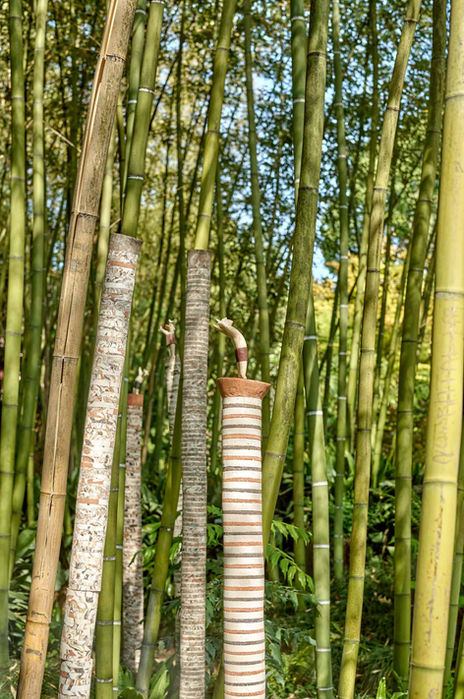Mariano Fuga
Swindlers on Columns, 2009
Artwork Brief Description
Fuga’s whimsical ceramic figures evoke joy and contemplation. Scattered throughout the garden, they appear mid-leap or deep in thought. Their varied expressions reflect the spectrum of human emotion, encouraging viewers to explore their own interpretations.









Mariano Fuga, Born in 1948 in Nove (Vicenza-Italy).
He lives and works in Gargnano sul Garda (Brescia).
After studying at the Art Institute for Ceramics in Nove, he attended the Academy of Fine Arts in Venice, following the course of the sculptor Alberto Viani. From the seventies to today, he has been invited to and received awards in the main national and international events of contemporary sculpture and ceramics.
He creates his works in his studio-workshop at via Repubblica n°44 in Gargnano sul Garda.
Mariano Fuga (Italian b.1948) Tuffatori su Colonne, (Swindlers on Columns) 2009
Mariano Fuga’s playful “swindlers” are dispersed throughout the Heller garden. With their arms outstretched and their mouths open, it appears as if they might be about to jump from their posts and leap out at the viewer. Their ceramic forms are filled with life and energy; some appear to be flying, and others appear to be hovering in mid-air.
Their placement on cylindrical columns combined with their almost miniature scale encourages viewers to look up and ponder their expressions. They recall lilliputians, inhabitants of another world, or perhaps children with their innate sense of hope. Whilst there are many of these figures, they are not all uniform. Mostly they appear full of wonder and awe, perhaps of the beautiful garden and vegetation surrounding them. Others, however, appear worried and contemplative, as if they are unconvinced of their futures.
One figure of note is the “diver” perched on the edge of one of the uppermost ponds of the Heller garden. His positioning might imply that he is about to take a leap into the water below, and yet he is by no means dressed for a swim. Perhaps he is diving to rescue someone already in the pond as he waves his arms and shouts for help. Another darker interpretation is that he is contemplating his own existence, perplexed as to why life can be so challenging. Of course, Fuga’s character could also express a deep sense of joy and simply wish to exclaim his thoughts loudly for all to hear.
His artistic intentions are unclear, and yet through this modern storytelling, Fuga reveals the various states of emotion that we express as humans throughout different stages of our lives. He uses a veiled optimism to disguise the darker aspects of life and encourages the viewer to explore what is in front of them, both physically and metaphorically. He has an ongoing interest in the representation of the human figure, and here in the Heller Garden, his characters engage with the space around them to create new narratives and beginnings.